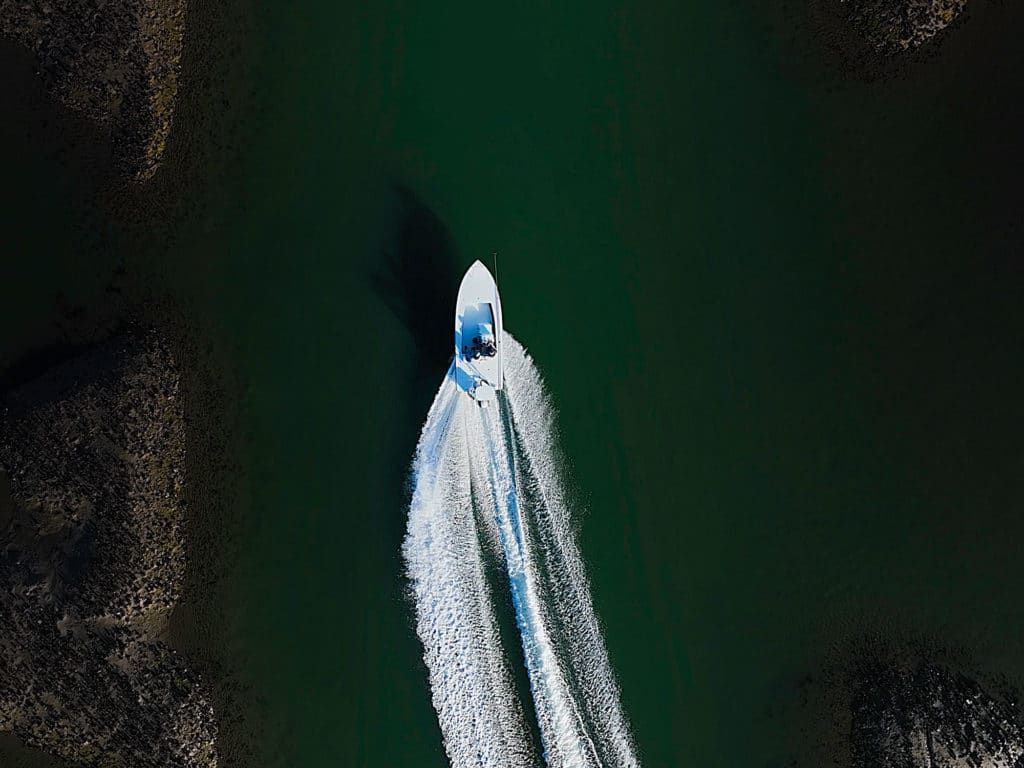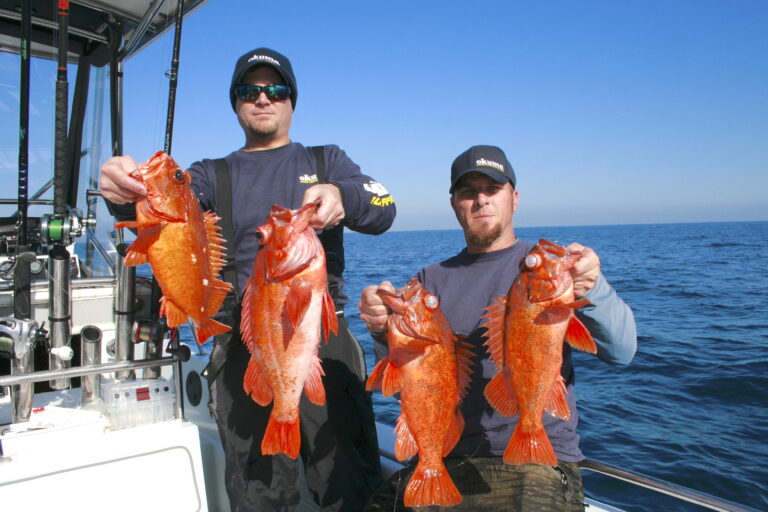
The best way to explain running a flats skiff at high speed in shallow water is akin to flying a helicopter at treetop level. The operator must understand that if you hit anything solid, bad things will happen. No doubt, the pucker factor is high. Okay, maybe it’s a bit more stressful for the guy in the helicopter. But grounding in your boat at high speed can cause catastrophic mechanical damage and potentially leave you stranded in the backcountry, not to mention those environmentally damaging prop scars you’ll leave behind thanks to your outboard motor.
The most important key to avoiding such disaster is simple: stay alert and aware. According to the United States Coast Guard, the number-one cause of all boating accidents, grounding included, is operator inattention. When you’re running a flats skiff you need to maintain 100 percent complete focus. On top of that, use these tips to make sure the cruise goes smooth.
Color Changes Signal Different Water Depths
Look for—and avoid—color changes. Deeper waters usually appear darker while sandy shoals are lighter in color, but dark spots can also be deceiving because they can be caused by grass flats or weed beds. When you know there’s plenty of water under the keel, the best move is to avoid visible color changes entirely.
Use a Chartplotter to Track Your Route
Aways keep your chartplotter track active, and follow your own breadcrumb trail back to the dock. Chances are, heading out to your fishing spot, you created a route you now know is safe to follow home. But, there’s a caveat: this is only a sure thing if the tide’s been rising or static since you traveled that path. Pay attention to the changing tides or you won’t know if that route is really safe. For example, the route might not be safe to travel home if the tide is low, or lower, compared to when you headed out.
Wear Sunglasses When Running a Flats Skiff
Wear a pair of light-appropriate polarized sunglasses. Dark lenses are great for bright, sunny days, but in low light or hazy conditions they can be overwhelming. Yellow lenses, on the other hand, improve contrast in low light and will help you spot color changes in the water.
Don’t Run Over Unfamiliar Shallow Water
Take the long way home. Instead of trimming to the hilt and hanging on tight as you scream across a flat, simply go around it. Head out to those channel markers, even if adds a couple minutes to your trip.
Use a Pushpole or Trolling Motor to Get to Deeper Water
When in doubt, shut down, tilt the engine up, and pole or walk your boat to deeper water rather than pushing the envelope. Anchor up for a time, and wait out the tides if they’re too low — you might come across some gamefish exiting the flat too. It may take you a bit longer to get where you’re going, but it’ll be a lot faster than if you wipe out your lower unit.










